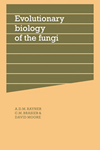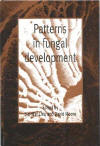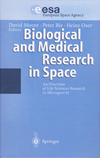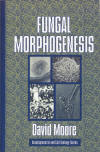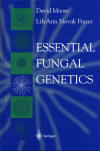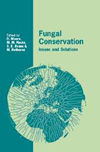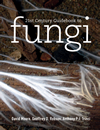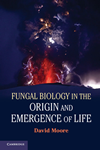3. Exotic mushrooms
Most of the research described so far has made use of laboratory cultures of the inkcap mushroom Coprinopsis cinerea. However, I have carried out research on many cultivated mushrooms, particularly those considered ‘exotic’ in UK shops (like shiitake and oyster mushrooms) and especially in collaboration with colleagues from Hong Kong, Malaysia and Mexico.
Ganoderma. One of the most exotic mushrooms is Ganoderma, which has been used extensively in traditional Chinese medicine and is unique among cultivated mushrooms by being farmed for its perceived pharmaceutical value rather than as a food. Under the names lingzhi or reishi, several Ganoderma species of the G. lucidum species complex provide various commercial brands of dietary supplements (also known as nutraceuticals), in the form of health drinks, powders, pills and capsules containing mycelium or fruit body extracts, spores, etc. Extravagant claims are often made for these products and the total dietary supplement market in the United States alone was estimated to be US$14.0 billion in the year 2000, with Ganoderma mushroom-based dietary supplements contributing about US$2 billion to that total. Our contribution to the Ganoderma literature was to measure the nutritive composition of a hot aqueous extract of wild Ganoderma fruit bodies (equivalent to ‘reishi tea’) and assess its ability to cause cytological or genetic damage to mouse cells or protect those cells against damage by another mutagen (Chiu, Wang, Leung & Moore, 2000).
The analyses showed that the Ganoderma extract is only a minor contributor to the nutrition of the animals as it had only a modest proportion of the food value of normal animal feed. Freeze-dried Ganoderma extract consisted of amino acids (68.9% of dry weight), though protein comprised only 7.3% of dry weight; glucose (11.1% of dry weight) and metal ions at 10.2% of dry weight (K, Mg and Ca being the major components with germanium (Ge), often touted as being of value in sales literature for Ganoderma preparations, having the fifth highest metal concentration at 489 µg g-1 dry weight). This Ganoderma extract was assessed for cytotoxicity and genotoxicity in vivo by both acute and subchronic exposure of mice (given by mouth at a dose equivalent to extract of 220 g fresh Ganoderma fruit body kg-1 body weight). No evidence was found for genotoxic chromosomal breakage nor cytotoxic effects by Ganoderma extract in the mouse. To test for the alleged protection against mutagens by Ganoderma treatments, the mice were injected intraperitoneally with the radiomimetic mutagen ethyl methanesulfonate (EMS), and after 24 h of treatment their lymphocytes were examined using the comet assay (also called the single-cell gel assay) which directly visualises DNA damage in individual cells. We found no support in this study for the extract having any value in protecting against the test mutagen. Our overall conclusion was that Ganoderma extract was essentially useless; having little or no value as a nutritional supplement and no ability to protect against the mutational effects of ethyl methanesulfonate although the extract itself did not cause any cytogenetic damage to the mouse (Chiu, Wang, Leung & Moore, 2000).
Shiitake, Chinese mushrooms, Lentinula edodes.China is the world's major mushroom producing country. Agaricus production is mainly for export but Lentinula edodes (shiitake or shiang-gu) is the traditional local product, and now the major crop. Lentinula edodes is indigenous to China and was first cultivated there more than 800 years ago. Today, China accounts for about 70% of world production. Shiang-gu (the Chinese name) is presently about the second or third most popular cultivated mushroom in the world, being consumed throughout China, Taiwan, Japan and Korea, and with increasing world-wide popularity. One-third of the Chinese crop is exported amounting to the equivalent of about 300,000 tonnes of fresh mushrooms. The Chinese preference is for the dried mushroom because drying produces the characteristic ‘umami’ flavour compounds of the mushroom (an important one being lenthionine, which is a cyclic organosulphur compound [1,2,3,5,6-pentathiacycloheptane] and another being guanosine-5'-monophosphate which seems to be produced by desiccation stress).
Alvin Tan brought a collection of commercial strains of the shiitake mushroom, Lentinula edodes, when he came to Manchester from Malaysia to study for a PhD. For the first part of his study he selected three (called Le-11, Le-103 and Le-465) of the 18 commercially-used strains on the basis of rate and density of mycelial growth (Tan & Moore, 1992). Comparison of biomass production between stationary and shake flask cultures was strain-dependent; strain Le-465 producing higher yields from shaken than stationary cultures while no differences were recorded in Le-11 and Le-103. Among 5 media tested for mycelial growth yield, a molasses medium gave the highest biomass after 14 days, but by day 28 yield from that medium was the second lowest. By day 28, a chemically defined medium was the best for biomass yield.
Homogenisation of mycelia with a laboratory blender provided an excellent uniform source of inoculum for replicate trials. Homogenisation of the inoculum increased the yield of mycelium by day 28, when fruiting started. Chemically-defined media were best for fruiting of L. edodes. There was not much difference in fruiting performance between cultures incubated at a uniform 25°C and those incubated in a 14/22°C cycle. Supplementation of flask cultures with vermiculite (commonly added to commercial mushroom composts) promoted growth and fruiting. In flask cultures kept in a normal incubator a cotton stopper, as opposed to one made of plastic foam, was most suitable for growth and fruiting. Inclusion of a carbon dioxide trap was not necessary. The best fruiting in vitro was obtained by inoculation onto solid supports, like a wire mesh or agar blocks, in crystallising dishes which were kept within a plastic chamber whose air-flow and humidity could be regulated with air-vents and an air-pump. Under such conditions, vermiculite addition to the media did not enhance fruiting (Tan & Moore, 1992).
This essential in vitro cultivation data provided the basis for experimental design when we later went on to study glucose catabolic pathways in Lentinula edodes (Tan & Moore, 1995). Carbohydrate metabolism in different tissues was studied using radiorespirometry and enzymological analysis. Radiorespirometry monitors 14CO2 liberation from labelled glucose fed to the tissue under test. The glucose can be labelled at different carbon atoms in the molecule and the pattern of 14CO2 release from molecules differently-labelled reveals the metabolic pathway responsible for glucose catabolism. For example, comparing the amount of 14CO2 released from C1-labelled glucose (14C1-glucose) with that released from C6-labelled glucose (14C6-glucose) can distinguish between metabolism through the pentose phosphate pathway (which favours release of the C1 carbon as CO2) and metabolism through the Embden-Meyerhof-Parnas (glycolytic) pathway (which favours release of the C6 carbon as CO2). In our experiments, the 14C1/14C6 ratios in CO2 respired from specifically labelled glucose fed to Lentinula edodes tissues grown on a chemically defined medium ranged from 2.5 (in vegetative mycelium) to 14.9 (in young gill lamellae). Revealing that metabolic activity through the pentose phosphate pathway was very high in fruit body tissue but low in mycelium. In fact, 14.9 was the highest ratio recorded, and it is significant that it occurred in young gill tissues which are biosynthetically most active, requiring the reducing power of NADPH generated through the pentose phosphate pathway. Extensive conversion of 14C3, 4-labelled glucose to 14CO2 by the mycelium underlined the important role of the Embden-Meyerhof-Parnas pathway in that tissue (Tan & Moore, 1995).
A 14C1/14C6 ratio of 14.8 for young gills of fruit bodies grown on woodchips indicates that the growth medium did not influence the pathway used in the fruit body. Ratios for the young fruit body epidermis and stem were 8.0 and 10.4 respectively in Lentinula fruit bodies. A ratio of 3.6 for Coprinopsis cinerea gills confirms the comparatively lesser importance of the pentose phosphate pathway in this organism (a feature previously deduced from the low activity of pentose phosphate pathway enzymes by Moore & Ewaze, 1976). Assays of enzyme activities corroborated the metabolic pattern deduced from radiolabelling in Lentinula edodes. Specific activities of pentose phosphate pathway enzymes (glucose 6-phosphate dehydrogenase and 6-phosphogluconate dehydrogenase) were three times as high in the fruit body tissues as compared with the mycelium, with the highest activity being in the young cap. Embden-Meyerhof-Parnas pathway enzymes (fructose 1,6-bisphosphate, aldolase and glucose 6-phosphate isomerase) had higher specific activities in mycelium than in fruit body tissue, and were also more active than pentose phosphate pathway enzymes within the mycelium itself. Within the fruit body, specific activities of Embden-Meyerhof-Parnas pathway and pentose phosphate pathway enzymes were about the same. Enzymic activity in the mature cap of Coprinopsis cinerea more closely resembled the pattern observed in the mycelium of Lentinula edodes rather than that of the L. edodes fruit body (which is to say that Embden-Meyerhof-Parnas pathway enzymes were very much more active than those of the pentose phosphate pathway in L. edodes mycelium and C. cinerea fruit body) (Tan & Moore, 1995).
Clearly, very different metabolic routes are favoured in different agaric fungi. Nevertheless, there was a positive correlation between high pentose phosphate pathway activity and accumulation of large amounts of mannitol in the fruit body. A quantitative analysis of mannitol, using gas-liquid chromatography (GLC), carried out on the various tissues of Lentinula edodes in comparison with Agaricus bisporus and Coprinopsis cinerea revealed high concentrations of mannitol in the mature shiitake mushroom (amounting to 20 to 30% of fruit body cap dry weight). This compared to a value close to 50% of the dry weight in the cap of Agaricus bisporus. These observations of similar levels of accumulation of mannitol in the fruit body suggest that glucose catabolism in L. edodes and A. bisporus mushrooms are similar (Tan & Moore, 1994). No mannitol was detectable in the cap of C. cinerea, which, as we have seen above, amplifies a different metabolic network during maturation of the fruit body cap.
As stated above, China is the major producer and exporter of shiitake/shiang-gu (Lentinula edodes), and the species is native to the country. China has a history of around a thousand years of shiitake cultivation across a vast land area. Cultivation and natural occurrence in the same geographical region carries the risk of contamination of the wild population with the (probably narrower) genetic complement of commercial cultivars. We used the polymerase chain reaction to generate random amplified polymorphic DNA marker profiles (RAPDs) and restriction fragment length polymorphism patterns of ribosomal DNAs (rDNA-RFLPs) to characterise nineteen strains of shiitake which are used for spawn production for farms throughout mainland China (Chiu, Ma, Lin & Moore, 1996). All strains showed identical rDNA-RFLPs, and only three of the strains tested showed different RAPDs with most of the primers used, while the others showed small differences in three or fewer DNA amplification profiles. We concluded that cultivated strains of shiitake in China are genetically very homogeneous, very like cultivated strains of other farmed fungi. It is worth noting here that similar studies of Agaricus bisporus using cloned fragments from a partial genomic library to detect restriction fragment length polymorphisms (RFLPs) readily identified polymorphisms. The A. bisporus RFLPs demonstrated variation in wild and cultivated strains of the mushroom; normal meiotic segregation in single spore progeny; and were used to differentiate between homokaryons and heterokaryons. These results suggest that RFLPs could form a basis for genetic finger-printing and subsequent strain protection in A. bisporus (Loftus, Moore & Elliott, 1988).
However, the collection of L. edodes used in the Hubei study covers an enormous geographical area (approx. 1700 km N to S, 700 km E to W) so the results demonstrate that the shiitake industry in China depends on an extremely small gene pool. In comparison, three wild strains collected from the same ecosystem in Fujian Province (SE China; Fig. 21) showed more variable RAPD profiles (Chiu, Ma, Lin & Moore, 1996). This emphasises the importance of conservation of wild shiitake strains as a reserve of biodiversity for this important industry. A survey of genetic diversity in wild Chinese shiitake has been undertaken using classical genetic markers such as sexual and somatic incompatibility factors, colony morphological features, tolerance/resistance to Trichoderma, and molecular markers such as DNA fingerprints (Chiu, Yip, Leung, Wang, Lin & Moore 1998). Collections have been made in Hubei Province (central China; see Fig. 21), where high summer temperatures limit shiitake cultivation to the autumn and winter and the landscape features deep river valleys and high mountains.
Climatic extremes and geographic isolation are likely to minimise the spread of cultivated strains and their contamination of the native diversity and this is why the region was chosen for study. Field isolates had diverse colony morphologies and among 30 strains collected, 50 A and 55 B mating type specificities were identified. On the basis of somatic incompatibility grouping, all the strains collected were distinct individuals. Tests of fruiting ability of fifteen strains revealed that three made fruit bodies within six weeks, which would categorise them as fast fruiters. One of the strains produced many primordia too and has potential for commercial exploitation. The information obtained provides a baseline description of genotype and phenotype diversity for wild shiitake and also permits assessment of whether the cultivars have already spread their genetic makeup to the wild. Preliminary data indicate high levels of diversity among isolates from the two nature reserves in Hubei Province (Chiu, Yip, Leung, Wang, Lin & Moore 1998).
|
Fig. 21 . Location of the provinces of China in which Lentinula edodes populations were sampled. The overall map on the left locates the Provinces of Hubei, Shaanxi and Gansu in the country and the detail on the right indicates the location of the collection site in Shaanxi Province. From Chiu, Wang, Chiu, Lin & Moore, 1999. |
The study in Hubei province was over an extremely large scale. In a related survey about 500 km away in the neighbouring province of Shaanxi (Fig. 21) we made a detailed examination of the spatial relationships of 24 fruit bodies which were collected over a maximum distance of 120 m, eighteen of them being found on the same felled tree trunk (Chiu, Wang, Chiu, Lin & Moore, 1999). This study is described in detail below, where it contributes to a discussion of mushroom genetics [view now]. I will not repeat this detail here; for now our main interest is the individualism that mushroom fungi express in nature and the potential interaction between diversity in the wild and diversity among cultivated strains. For present purposes the main point is that among the 24 specimens there were 22 incompatibility classes and the full set of genetic tests brought us to the conclusion that each fruit body is genetically distinct in Lentinula edodes. That is to say that the mycelia which gave rise to the fruit bodies we collected were genetically distinct individuals. Even the majority of neighbouring isolates belonged to different somatic compatibility groups, demonstrating that the territories of Lentinula edodes individuals in the wild are very small. In the area studied here, the smallest fruiting territory of L. edodes proved to be less than 20 cm in diameter, this being the maximum distance between adjacent isolates in the log which was sampled (Chiu, Wang, Chiu, Lin & Moore, 1999).
It is the physical scale involved here which is the important point. The maximum distance across the entire sampling site was 120 m and most of the isolates were recovered from a single log 5.6 m long within which the <20 cm diameter individuals were found. This is very small in comparison with other wood decay fungi, for example two individuals of Pleurotus ostreatus were one metre apart in one study (see discussion and references in Chiu, Wang, Chiu, Lin & Moore, 1999) and territories up to 200 m2 have been demonstrated for root pathogenic or mycorrhizal fungi. The largest territories known to be occupied by single fungal individuals are those of species of the root-rotting honey fungus Armillaria. Among these is included the largest organism on Earth; one individual mycelium of Armillaria gallica covering some 8.9 km2 (3.4 square miles) in the Blue Mountains/Malheur National Forest in eastern Oregon, USA, which is estimated to be a minimum of 1900 to a maximum of 8650 years old (Ferguson et al., 2003; and see also Smith, Bruhn & Anderson (1992) for the previous record-holder). Large individuals of Armillaria are not limited to the USA; in the Swiss National Park in the Central European Alps A. ostoyae individuals averaged 6.8 ha in size (1 ha = 10,000 m2 = 2.471 acres; 1 km2 = 100 ha), the largest so far found being approximately 37 ha (Bendel, Kienast & Rigling, 2006).
The evident small size of the Lentinula edodes territories has some important consequences for the mushroom industry as it is traditionally practised in China. Individualism in L. edodes is based on a reproductive strategy which depends on basidiospore dispersal and a strong somatic incompatibility system. Established mycelia face strong competition from contaminating individuals arriving as air-borne basidiospores. Even today, most mushroom farmers in China are located in mountainous regions and use traditional outdoor cultivation in which logs inoculated with cultivated spawn are piled in exposed stacks on the hillside. Isolations from different 3 year old inoculated wood logs from a mushroom farm in Hubei Province recovered several individual genotypes instead of the single genotype of the inoculated strain which was expected (S. W. Chiu & M. L. Yip, unpublished results). Such a situation must result from contaminating spores from the open air falling onto the cultivation logs and then successfully competing with the established (inoculated) commercial spawn. Crop quality and quantity cannot be guaranteed in such a situation and it could explain decreased and fluctuating crop yield (so called strain degeneration) which is now frequently reported (Chiu, Wang, Chiu, Lin & Moore, 1999). Evidently, contamination of the cultivated strain must be prevented, as should the unwanted reverse flow of genetic information through escape of the cultivar to contaminate and consequently endanger the germplasm resource in the wild.
The mushroom is an important food crop (Moore & Chiu, 2001). Fungi are an ideal food because:
- Crude protein typically represents 20-30% of fungal dry matter and contains all of the amino acids which are essential to human and animal nutrition;
- Fungal biomass is digested to leave their chitinous walls as a source of dietary fibre;
- Fungi contain B vitamins and are characteristically low in fat;
- An extremely important attribute of all fungal food is that it is virtually free of cholesterol (Moore & Chiu, 2001).
Fungal protein foods can compete successfully with animal protein foods like meat on health grounds. Since fungal foods can, in principle, be produced easily and often using waste products as substrates, fungal foods should also be able to compete successfully on grounds of primary cost (Chiu & Moore, 2001; Moore & Chiu, 2002).
As well as being an important earner of foreign exchange for the country, shiitake mushroom cultivation can make a very significant contribution to the income of peasant-farmers of the mountainous regions of China where the land is poor in fertility and too distant from reliable transport to make conventional farming of green crops profitable. It is particularly in these areas that the traditional log-pile cultivation method remains the one that is most frequently used. For this, locally felled logs (oak, chestnut, hornbeam, maple and other trees) over 10 cm diameter (probably about 20 to 30 years old) and 1.5 m to 2 m long are normally cut in spring or autumn of each year. Felling at this time minimises pre-infestation by wild fungi or insects. This amounts to between 50,000 and 100,000 trees every year just to maintain current production levels. Traditional usage of natural wood logs has been pursued to the extent that as availability of mature trees has declined attention has turned to younger trees and other tree species. This, combined with other demands for timber and land, has contributed to a loss of 87% of the native forests in China (Chiu & Moore, 2001; Moore & Chiu, 2002).
China now faces the problem that the rate of deforestation is much greater than the rate of reforestation in the remaining 13% forest cover. Regulations about planting and prohibitions on felling young trees are difficult to monitor and 'conservation awareness' is especially low among poor peasants living in the remote mountainous regions. The conservation pressures of Lentinula production result from the scale of the industry and from the biological consequences of traditional practices. The scale is difficult for Europeans to imagine: the Lentinula growing region covers an area about equal to the entire land area of the European Union and the crop is still grown mostly by open outdoor cultivation on a very large number of small farms. The main conservation issues raised by the traditional cultivation practices are:
- The obvious impact on wooded hillsides caused by felling of mature trees (of which only the largest logs are used);
- The fact that outside cultivation is used and the mushroom crop is harvested after basidiospore release has started with the consequent (unknown) danger(s) resulting from cross contamination between cultivated and natural populations of Lentinula edodes (Chiu & Moore, 2001; Moore & Chiu, 2002).
Chiu, Wang, Chiu, Lin & Moore (1999) suggested that more emphasis and encouragement be placed on indoor cultivation using ‘artificial logs’ (plastic bags filled with cultivation substrate) under cover (‘polytunnels’), and development of breeding strains adapted to these farming methods. A further advantage is that this method can also use industrial and agricultural waste and thereby help relieve the serious problem of deforestation in China. One reason for remarkable increases seen in production of several mushrooms has been the use of industrial waste products as substrates. Oyster mushrooms are easily grown on a variety of agro-industrial wastes, including cotton wastes. Similarly, while the paddy straw mushroom (Volvariella volvacea is traditionally grown in Southeast Asia on rice straw it too can be grown on cotton waste. Indeed, cotton waste (generated by the textile and garment industries) gives higher yields and is also more widely available than is rice straw so it is far cheaper (rice straw becomes expensive because of the cost of transport). Typically 80-90% of the total biomass of agricultural production is discarded as waste. This is an unacceptable loss of primary production when many mushrooms could be grown on agricultural residues, converting wastes into food, animal feed, pharmaceuticals and other products (Chiu & Moore, 2001; Moore & Chiu, 2002).
Concern about fungal conservation is particularly apt at a time when there is a world-wide concern over climate changes caused by human industrial activities. Mushroom fruit body morphogenesis is known to be affected by carbon and mineral nutrient availability, and environmental variables including temperature, water availability, CO2, light and interactions with other fungi and bacteria. Changes in the seasonal pattern of fruiting in the United Kingdom can be detected from field records made over the last 50 years, and while not all species behave in the same way, the average date of the first appearance of mushroom fruit bodies is now significantly earlier and average last fruiting date is now significantly later, which results in an extended fruiting season in the United Kingdom. Significant numbers of species that previously only fruited in autumn now also fruit in spring. Such analyses show that relatively simple field observations of fungi can detect climate change, and that fungal responses are sufficiently sensitive to react to the climate change that has already occurred by adapting their pattern of development (Moore, Gange, Gange & Boddy, 2008). Unfortunately, though it is possible to deduce the decisive steps in development that are open to influence, the molecular controls that normally regulate those steps remain unknown. Extensive genomic analysis shows that sequences crucial to multicellular development in animals or plants do not occur in fungal genomes, so we are still ignorant of the basic control processes of fungal multicellular developmental biology and have to rely on the historical tradition of more descriptive studies (Moore, 1988; Moore, 1993; Moore, 1996a; Moore, 2005; Reijnders & Moore, 1985; Watling & Moore, 1994).
I helped deal with wider issues of fungal conservation in the book Fungal Conservation: Issues and Solutions (Moore, Nauta, Evans & Rotheroe, 2001), which discussed threats to fungi and fungal diversity throughout the world, considered how fungi can be conserved and featured constructive guidance for management of nature in ways beneficial to fungi. The book offers a range of examples from Finland in the North to Kenya in the South, Washington State, USA in the West to Fujian Province, China in the East and received good reviews.
Fungal Conservation: Issues and Solutions '...[T]he book contains a large amount of information on fungal conservation and includes several contributions that make for very interesting reading...The solutions suggested are wide ranging and taken together this book offers useful suggestions on how fungi can be included in conservation projects. This book is a must for all serious mycology libraries, as well as those dealing with biodiversity and its conservation.' Quarterly Review of Biology. '...The book succeeds in giving an overview that fungi, as examples of microbial diversity, are indeed worthy of conservation...This book is highly recommended to all interested in conservation issues and maintenance of biodiversity.' Brittonia. '...This is a well written book, broad in mycological scope, and the topics are concisely presented. It is a good starting point for anyone interested in fungal conservation and should be required reading for North American ecologists, plant diversity researchers, land managers, and foresters.' The Canadian Field-Naturalist. |
Extracts from published reviews of: Moore, D., Nauta, M. M., Evans, S. E. & Rotheroe, M. (2001). Fungal Conservation: Issues and Solutions. Cambridge, UK: Cambridge University Press. ISBN-10: 0521803632, ISBN-13: 9780521803632. Book DOI: http://dx.doi.org/10.1017/CBO9780511565168. |
Oyster mushrooms, Pleurotus species. Pleurotus ostreatus, also known as the pearl oyster, was probably the first oyster mushroom to be grown commercially, in the 1940s. Today, however, Pleurotus pulmonarius is the most widely cultivated oyster mushroom species in Europe and North America and has become the second most popular cultivated mushroom in the world (it is often marketed in the Far East under the incorrect name ‘Pleurotus sajor-caju’ though this name refers to a separate species of mushroom, which actually belongs to the genus Lentinus!). P. pulmonarius is also, among several other names, known as the summer oyster because in the wild it prefers warmer weather than P. ostreatus and will appear later in the summer. All Pleurotus species are saprotrophic wood decay fungi that grow on dead (P. pulmonarius) and dying (P. ostreatus) trees in nature, and many are known to be nematophagous; that is, able to catch and digest nematode worms. P. ostreatus is quite an aggressive parasite of dying trees and fears that this might indicate a tendency towards pathogenicity has led to its import into New Zealand being banned due to perceived risks to their forestry industry. This is one reason why P. pulmonarius cultivation has come to dominate over P. ostreatus: commercial mushroom growing is a worldwide farming industry and cannot tolerate restrictions to the free international movement of its products. The caps of P. pulmonarius fruit bodies are much paler and smaller than those of P. ostreatus and P. pulmonarius develops a more distinct stem (P. ostreatus growing so close to the surface of the wood in nature that it can look like a bracket fungus).The two species are indistinguishable in flavour and their cultivation requirements are essentially the same; the process being basically that spores are germinated on boiled cereal grain and then after the mycelium colonises this ‘spawn’ it is transferred to cultivation substrates of straw, wood chips, sawdust, recycled cardboard, used coffee grounds, and other cellulose-based substrates.
The effect of several concentrations of the toxic analogue of glucose, 2-deoxy-D-glucose (deGlc), was observed on the rate of apical growth of strains of Pleurotus ostreatus using different carbon sources; these tests distinguished between tolerant and sensitive strains. Tolerance to deGlc was correlated with high productivity of the strains in pilot production farms (in the absence of deGlc) (Sánchez, Viniegra-González & Moore, 1996). This observation prompted Chiu & Moore (1999c) to examine the carbon metabolism of the closely-related Pleurotus pulmonarius, and the effect of deGlc on this metabolism in the wild type and in two deGlc-resistant strains, using media containing either glucose or maltose as the sole carbon source. Lower protein productivity and lower activity of glutamate-oxaloacetate transaminase were observed in maltose media, although fruit bodies appeared more rapidly on maltose media. Addition of deGlc to either glucose or maltose media did not affect the mycelial growth rate of vegetative cultures of the resistant mutants, nor intracellular protein productivity, or specific activities of glucose-6-phosphate dehydrogenase (marker enzyme for the pentose phosphate pathway), fructose 1,6-bisphosphate aldolase (aldolase) and glucose 6-phosphate isomerase (both of which are marker enzymes for the Embden-Meyerhof-Parnas pathway), or the two transaminases, glutamate-oxaloacetate transaminase and glutamate-pyruvate transaminase (Chiu & Moore, 1999c).
However, deGlc did inhibit renewed fruiting in vitro and delayed fruiting and decreased yield in cultures grown on waste-paper compost. In the fruit body tissues, deGlc present in compost decreased protein productivity in the stem. When Pleurotus pulmonarius initiated fruiting, glutamate-oxaloacetate transaminase specific activity declined, aldolase activity increased, and glucose 6-phosphate isomerase specific activity reduced in the whole culture. The specific activity of glucose 6-phosphate isomerase was maintained at such low levels in both stem and cap tissues that we concluded that the Embden-Meyerhof-Parnas pathway makes only a minor contribution to hexose metabolism in the fruit body in P. pulmonarius. Glucose-6-phosphate dehydrogenase and glutamate-oxaloacetate transaminase activities were high in fruit body tissues (highest in stem tissues). Thus, although both pentose phosphate and Embden-Meyerhof-Parnas pathways contribute to vegetative growth, the pentose phosphate pathway is the main route for metabolism of glucose to pyruvate in P. pulmonarius fruit bodies. The tolerance mechanism to deGlc does not involve direct intervention in carbon flux, but the different reactions to deGlc imply that ‘fruit-body-specific’ metabolism is differentially sensitive to inhibition by this analogue. DeGlc may act as a paramorphogen through some regulatory mechanism. DeGlc is phosphorylated but not further metabolised and can influence metabolism through the uncontrolled rise in deGlc 6-phosphate concentration, depletion of ATP, rise in ADP, and drain on metabolic phosphate. It is feasible, therefore, that high yielding strains have an altered ‘fruit-body-specific’ metabolism which can be manifested in mycelium in vitro as a natural tolerance to deGlc (Chiu & Moore, 1999c).
The formation of fruit body initials is a crucial change in the behaviour of a mycelium. The shift from vegetative growth to multicellular development is not merely a profound scientific curiosity, but is the cornerstone of every cultivation programme. There is clearly a very distinctive chemical difference between vegetative hyphae and the hyphae of a fruit body initial because we have demonstrated that conventional histological stains selectively stain fruit body initials of Pleurotus pulmonarius and Coprinopsis cinerea for both light and scanning electron microscopy (Sánchez & Moore, 1999). An approach combining histological staining (flooding the Petri dish with 1% toluidine blue in 1% boric acid (w/v) for 15 minutes) allowed the number of fruit bodies formed on Petri dishes to be quantified easily with computerised image analysis. Light microscopy and cryo-scanning electron microscopy (of frozen specimens) were used to confirm that even the smallest structures to take up stain were initials of fruit bodies.
Use of the vital stain Janus green (0.001% aqueous, w/v) allowed continued observation of living tissue so that the proportion of fruit bodies that matured could be established (it proved to be 30%). The Janus green method was also effective on wheat straw cultures and could be used to monitor development of maturing fruit bodies. It is a promising tool in the study of physiological processes involved in fruit body initiation by facilitating objective and quantitative studies of fruit body initiation (Sánchez & Moore, 1999). The chemical basis for this differential staining of fruit body initials is completely unknown. Fruit body initials in Agaricales and Aphyllophorales generally arise at points which express a heightened frequency of branching in the aerial hyphae. Because it is difficult to identify the youngest structures (the fruit body initials) with certainty, most work on fruit body formation depends on the production of more recognisable immature primordia or mature fruit bodies. We hope, therefore, that this staining method, even though its chemical basis is obscure, will contribute to quantitative experimental analysis of the earliest stages in fruit body development and the even more difficult determination of those initials that will survive to maturity (Sánchez & Moore, 1999).
We have made a start by showing that a standard cytochemical test, in this case the Feulgen reagent, was able to detect substantial biochemical differences in hyphae of different zones of the fruiting colony of Pleurotus pulmonarius. Staining correlated with differences in the enzymatic activity, protein, glycogen and glucan contents of mycelium hyphae and those in fruit body initials. The implications are that hyphal maturity in P. pulmonarius involves storage of glucans, in part at least, in the form of a thickened hyphal wall (Sánchez, Téllez-Téllez, Díaz-Godínez, & Moore, 2004).
That specific differentiation of the wall in fruiting bodies may account for the ability of Pleurotus pulmonarius mushrooms to accumulate metal ions (Chiu, Chan, Law, Cheung & Moore, 1998). In this study, we showed that renewed fruiting from excised stems can be used as a simple and rapid in vitro bioassay system to detect fruiting modulators. We used this and conventional cultivation techniques to examine the effects of cadmium, a potential contaminant from industrial sources, calcium, which is an ingredient in mushroom compost, and manganese, which has been claimed to improve the yield of P. ostreatus. None of these three metallic salts adversely affected sporulation. Calcium chloride addition shortened the time taken for the mushroom to fully cover the cultivation compost and improved yield. Insoluble calcium salts at higher concentrations had a similar though less pronounced effect. The calcium and total amino acid contents of fruit bodies also increased.
Compost supplementation with calcium is desirable for cultivation of the oyster mushroom but not indispensable since the straw-based cultivation substrate is itself able to provide the required minerals. By contrast, manganese chloride retarded mycelial growth and decreased yield but increased the total amino acid content in the stem; whilst manganese sulphate did not enhance accumulation of manganese into fruit bodies, excess manganese induced browning of vegetative tissues. Cadmium ions did not kill the oyster mushroom at 4.5 mM but reduced yield by 50%. At this concentration cadmium decreased the total amino acid content and affected the amino acid profile but did not affect the form and shape of the fruit bodies. Pleurotus pulmonarius concentrated cadmium to such an extent that consumption of as little as 20 g (dry weight) of the most contaminated samples would exceed the weekly limit tolerated by humans and thus pose a health hazard. Monitoring the heavy metal contents of mushrooms marketed for food is, therefore, advised as the source of the substrate for cultivation is usually not known and if the cultivation substrate is an industrial waste product it may well be contaminated with heavy metals.
Primordium initiation is a crucial stage in mushr00m development; however, exactly what happens internally when a basidiomycete changes from vegetative to reproductive morphology is not known. Sánchez & Moore (1998) used microscopy and histology to examine initiation and the cytology of different stages of fruit body development of Pleurotus pulmonarius. Highly specific staining reactions occurred in fruit bodies, and allowed the most active zones in fruit body development to be distinguished as they stained more densely than other zones. In a differentiated fruit body the hyphae of the base were intermediate in size and twisted together. Hyphae from the stem were the largest, arranged mainly in a longitudinal or parallel manner, and those from the cap were the smallest, arranged in a perpendicular interwoven orientation as compared to hyphae from the stem. As the fruit body developed the thickness of the hyphal cell walls increased. There were no significant differences between the length or diameter of hyphae of fruit bodies formed either on potato extract agar medium or wheat straw. However, hyphae of fruit bodies formed on potato extract agar had less stainable cytoplasmic material and more vacuoles than the hyphae of fruit bodies formed on wheat straw (Sánchez & Moore, 1998).
Further studies using transmission, environmental-scanning and cryoscanning electron microscopy allowed us to conclude that expansion of the young fruit body of Pleurotus pulmonarius involves considerable vacuolation of hyphae but no marked increase in cell dimensions (Sánchez, Moore & Díaz-Godínez, 2006). There is evidence for an extensive extracellular matrix (ECM). However, the ECM in these fruit bodies is a dilute material. It is easily lost during specimen preparation, being washed off by fixatives and dehydration solvents and reduced to a granular coating of scattered remnants of its component solutes by critical point drying. ECM is evident only when techniques are used to preserve the fluid surface of the hyphae; which means, with current technologies, environmental-scanning electron microscopy. The ECM is an essential part of normal hyphal structure and is modified and supplemented by lysis of cells that accumulate it [see Reaction with an extracellular matrix section below; view now], so the composition of the ECM is under the control of the hyphae which the ECM surrounds.
The components of the ECM are equivalent to the extracellular polymeric substances (EPS) that make up the matrix of microbial biofilms (Flemming & Wingender, 2010; Flemming, Wingender & Szewzyk, 2011; Karatan & Watnick, 2009). The ECM invests mycelial hyphae as well as hyphae throughout multicellular structures like fruit bodies and vegetative bodies like sclerotia. It probably serves functions as diverse as those served by the biofilm matrix EPS. Many EPS are hygroscopic and actively retain water so the biofilm matrix provides a highly hydrated environment that dries more slowly than its surroundings and consequently protects cells in the biofilm against fluctuations in water availability. Exopolysaccharides in the matrix provide a degree of mechanical stability to biofilms, forming a scaffold for the three-dimensional architecture of the biofilm within which the cells are embedded. The biofilm matrix mediates adhesion between cells and to surfaces; acts as an external digestive system by keeping extracellular enzymes close to the cells, enabling the cells to create local microenvironments which are most appropriate for those cells at that position in the tissue and at that stage in their development. Fungal differentiation appears to be quite flexible and greatly influenced by the immediate microenvironment, but the local microenvironment is determined by the fungal cells themselves.
The study of sclerotia eventually acquired a genetical twist (Moore, 1981b) and led directly to extensive study of fruit body development, much of which will be described below. Discovery of the tissue-specific derepression of NADP-GDH in 1972 was the start of a long-running saga of biochemical investigation of carbon and nitrogen metabolism. Along the way, we revealed a major role for urea as an osmotic metabolite in the Coprinopsis cinerea fruit body cap (and only the cap). This and other aspects of the study was reviewed in 1984 (Moore, 1984a) but it was not until 1988 that we found a cap-specific function for GDH and a likely function for the NADP-linked enzyme important enough to warrant its specific derepression during cap development (Chiu & Moore, 1988a; Chiu & Moore, 1988b). I will return to this later, now I want to deal with work on gravitropism because this was one of the novel experimental approaches that I introduced to study development in fungi; other important new approaches being quantitative analysis of cell sizes and distributions during development and in vitro tissue transplantations. [TOP]
Updated December 7, 2016


